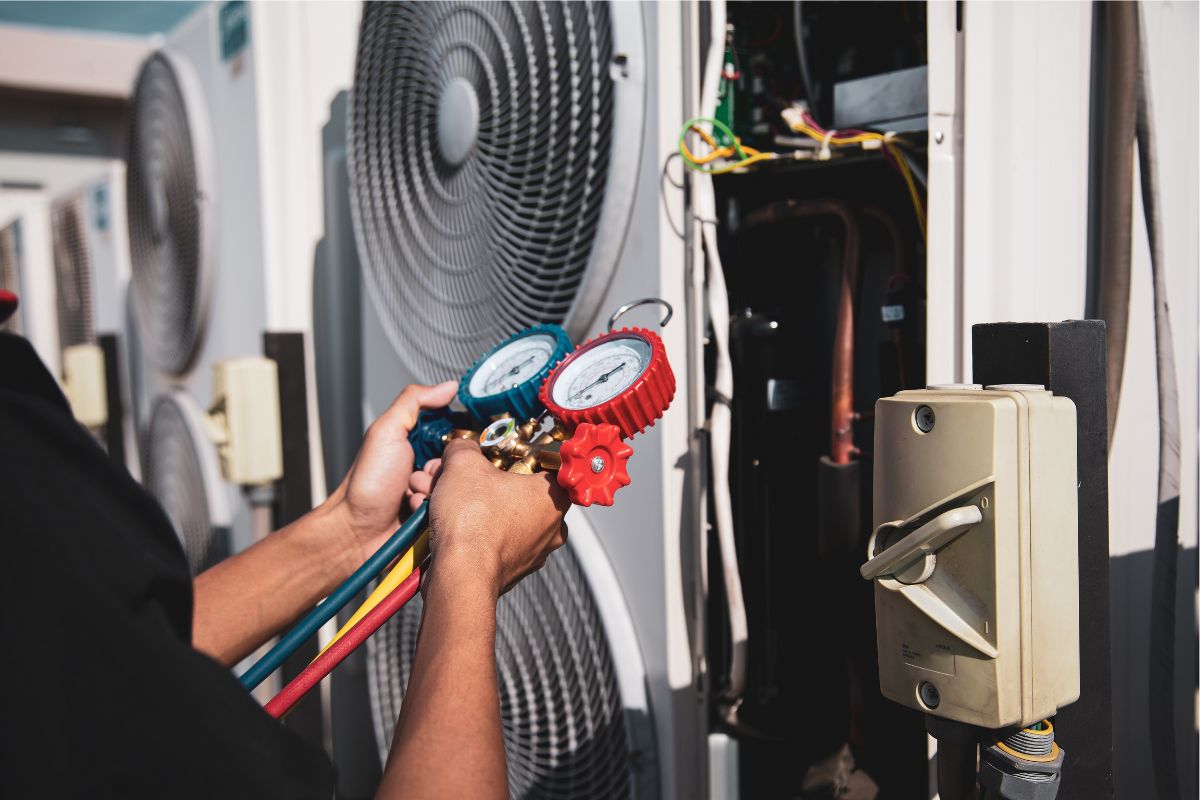As your HVAC system will be running high this summer, it’s important to stay ahead of the curve by identifying airborne contaminants that can manifest in your HVAC system and what risks exactly they pose to your health. From dust to legionella, here’s an in-depth look at what airborne contaminants you should look out for this summer.
Understanding Legionella
One of the most important and often understated airborne contaminants to be aware of is legionella. Legionella is a bacteria that is commonly found in freshwater environments, according to the Association for Professionals in Infection Control and Epidemiology (APIC). Though usually harmless, when fostered in unkempt and unattended to manmade environments, it can pose a major threat to one’s health.
One manmade environment where legionella can take residence in is your HVAC system. As your AC works to remove humidity from the office or your home, a drain pan will work to catch all excess water and condensation. However, this can be a powerful breeding ground for legionella — as the bacteria thrives in wet environments. Take the time to remove the water from your drain pan and clean your HVAC system, as failure to do so can lead to an outbreak of legionnaires’ disease.
Legionnaires’ disease, as defined by the Mayo Clinic, is “a severe form of pneumonia — lung inflammation usually caused by infection [from] legionella.” Symptoms of the disease include head and muscle aches, a fever that exceeds 104 degrees, chest pain, breathing problems, mental fatigue, coughing, and gastrointestinal issues. The symptoms last from days to weeks depending on the circumstances, but emergency care is needed.
The Most Common Airborne Contaminants: Dust and Dirt
Of course, as is with HVAC systems, they are highly susceptible to both dust and dirt buildup. Very common and cumbersome airborne contaminants, dust and dirt can easily build up in your HVAC system if you’re not keeping an eye out.
Dust, dirt, and other debris thus make their way through your HVAC system whether it’s through holes or, as dust usually does, by freely traveling through the air. Over time, this has dangerous ramifications for your system. For example, dust and dirt attaching to your coils — even a minute amount — can result in a drop in energy efficiency and lead to poor air balance. Alongside diminished airflow, this can result in increased energy bills — as you’ll be running back and forth to adjust your home/office’s thermostat and sending it into overdrive to compensate.
Dust and dirt also lead to poor air quality, resulting in respiratory issues — such as coughing and triggering asthma symptoms — for members of your household and your workforce. Take the time to make sure your air filters are in functioning order and that your HVAC system is clean of any debris.
Combating Airborne Contaminants with Air Ideal
The summer is a crucial time to have your HVAC system inspected. With the water buildup and airborne contaminants that the summertime brings about, having your system serviced will be of utmost benefit to your workforce and household members’ health.
At Air Ideal, our trained and experienced technicians are here to ensure your safety 24/7, all year-round. To learn more about how Air Ideal helps in combating airborne contaminants, please visit our website and contact us today.



